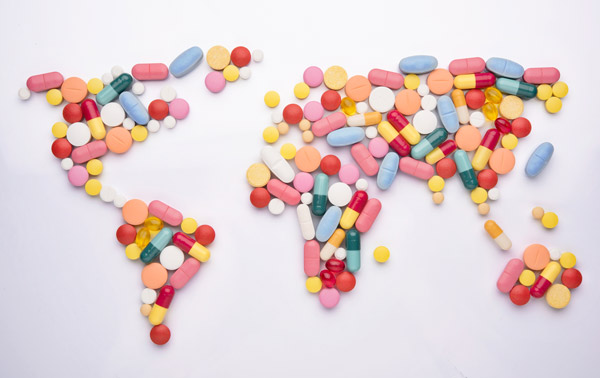This post has already been read 13379 times!
In this post I’ll examine some of the top pharmaceutical trends and challenges that are impacting the industry. In a follow-up post, I’ll discuss the steps that companies can take to meet these challenges.
The world is changing at an ever-increasing rate: the mall has been abandoned for online, same-day delivery; the traditional classroom is losing ground to online classes in the comfort of your home in your pajamas. And soon, driving our own cars may be a nostalgic activity we tell our grandkids about.
Human and pathogen genome mapping and targeted intervention is just one of the forces revolutionizing healthcare... Share on XHealthcare is no different. Here are six trends impacting the pharmaceutical industry right now.
1. Digitalization of Healthcare
The digitization of the patient, from electronic health records to the actual mapping of not only a person’s genome, but also the pathogen’s genome of what is affecting a person’s health, allows for targeted interventions that are revolutionizing healthcare. The introduction of special purpose wearables offers a real-time window into a patient’s progress, and ultimate outcomes, that can be used all the way back into the medical supply chain. But this opportunity can only be leveraged if the companies up through the supply chain are ready to take advantage of this new business model opportunity.
Say “good-bye” to business as usual!
Even before the push to digitize the patient’s world, the pharmaceutical industry is facing a set of problems it needs deal with. Even without the technological and regulatory changes bombarding the industry, large pharmaceutical companies are dealing with economic circumstances that threaten “business as usual.”
2. Plummeting Pharmaceutical Revenues
As the patent cliff continues to materialize, big pharmaceutical companies must prepare themselves for a business environment where the locked-in profitability of gangbuster drugs has dissipated. According to EvaluatePharma, “World Preview 2018,” between 2012 and 2018, generic erosion was projected to wipe out about $148 billion in pharmaceutical revenues.
3. Tapped Out Budgets
Even without the attack of the generics and the associated pricing pressure, the affordability of healthcare overall and the impact on government, insurance and personal budgets is a major topic that will simply not go away. The price of drugs is at the top of many legislators’’ and regulators’ lists and the lack of affordability is causing tighter economic governance that will limit the industry’s ability to make up this patent-expired downturn.
If the drug companies are expecting governments to pick up the economic slack of pricing, with the federal budgets of all the developed countries already being strained under the weight of other social programs, the money will just not be there.
4. Increasing Regulation and Scrutiny
Adding to the oversight woes of pricing is the increased scrutiny of the regulators and payers over drug effectiveness.
According to a recent PWC report, only 5% of the US health insurers surveyed were very confident of the quality of the economic data pharma companies provide, and only 7% were very confident of the information they received on a drug’s comparative effectiveness (PWC – From Vision to Decision Pharma 2020).
As the move towards value-based pricing matures, the realized profit for the drug companies will move away from per unit pricing and be based more on effectivity and outcomes putting more pressure on the data collection systems at the patient level and points of care.
5. Difficult Global Markets

Although markets like Africa, Asia and South America offer the pharmaceutical companies tremendous growth opportunities, these markets come with some enormous challenges, such as their geographic size, underdeveloped infrastructure, fragmented distribution systems and weak regulations that are often ineffectively enforced.
Average household incomes are also much lower than they are in the developed world, resulting in a reliance on already strained national budgets to subsidize the cost of the drugs. In some parts of the world, people still do not trust the taking of pills and vaccines to combat disease and rely on traditional tribal cures.
6. Counterfeit Pharmaceuticals
Adding a layer of complexity onto the industry is a new set of regulatory changes being driven by safety and counterfeiting concerns. Counterfeit medicine is fake medicine. It may be contaminated or contain the wrong or no active ingredient. Not only are counterfeit drugs illegal, they may be harmful to your health.
Pharma companies are being required to track the product ID, origination and tracing of its movement.
The World Customs Organization estimates the counterfeit drug market hit $200 billion dollars in 2010, and that there were more fakes than real drugs on the market worldwide (Reuters, Customs Group to Fight $200 Billion Bogus Drug Industry).
One industry estimate is that “fake medicines” cause at least 100,000 annual deaths in the US, and as high as 700,000 per year globally.
Counterfeit drugs are not just a problem via the black market, but are also available through the legitimate supply chain, which also includes a number of online pharmacies. The legitimate supply chain has many stages in which counterfeits can enter, starting with providing ingredients for manufacturing of the drug. Subsequent stages for infiltration include storage, transportation, and finally distribution.
In 2013, to combat this growing problem, President Obama signed the Drug Supply Chain Security Act into law, which provides for a national track-and-trace system that would allow a specific drug to be followed from the manufacturer to the pharmacy.
This should make it more difficult for counterfeit drugs to enter the legitimate US pharmaceutical supply chain. Other governments are doing similar actions. The US law provides for a national system of electronic tracking of drugs and is expected to be implemented by 2018.
The Pharmaceutical Market is Ripe for Disruption
All of this culminates into exploding complexity in the supply chain of pharmaceuticals. And unfortunately, the enterprise systems that have worked in the past are ill-suited when it comes to the requirements of this modern-day supply chain. With an increased reliance on outsourced contract manufacturers and third-party logistics providers, the lack of visibility across the various entities of supply chain has never been murkier. Couple this with the inherent demand variability of unusual and unexpected demand from anywhere in the world, and the mismatch of supply and demand creates an increasingly volatile value chain scenario.
Without a better demand signal and forecasting from the patient-level across the heterogeneous points of care, the amount of inventory required just adds to the overall cost of delivery; one of the very points that payers and regulators are concerned about.
In a follow-up article, I’ll look at how companies can use new technology to gain control of their supply chains and costs, and drive a better customer experience. In the meantime you might be interested in reading the white paper Top Trends in Pharma and a case study on how a digital network is being used to manage the pharmaceutical supply chain in Rwanda.
- Modernizing Defense Supply Chains - January 11, 2025
- Supply Chain Crossword Challenge - October 30, 2024
- Infographic: 6 Requirements for Transforming Supply Chains with Artificial Intelligence - June 10, 2024
